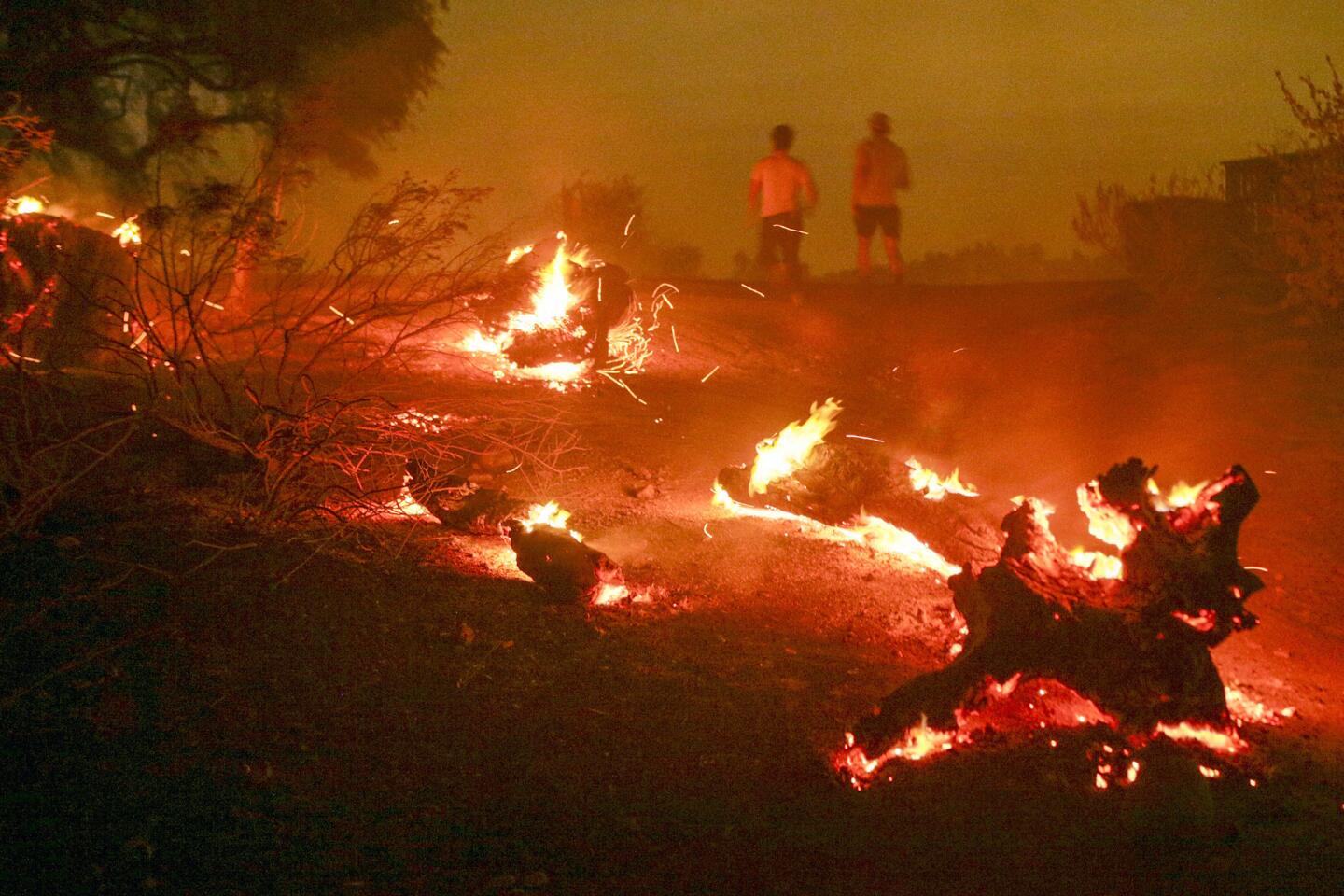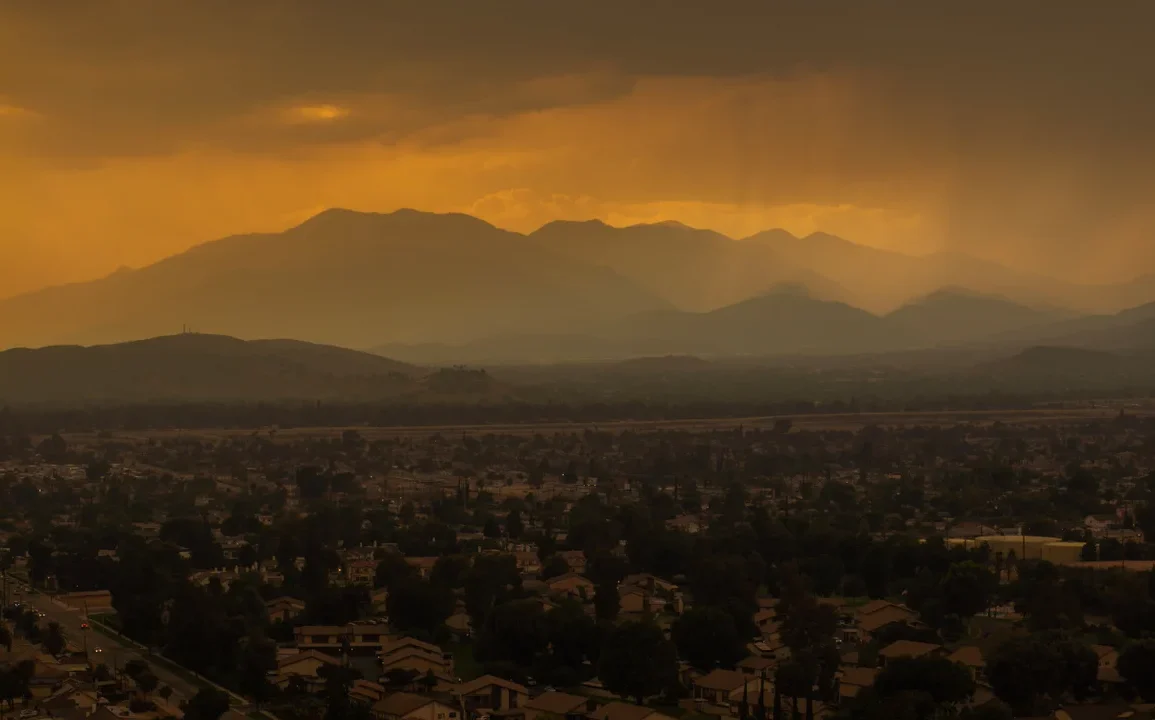A brush fire that started on Monday afternoon in the hills of Orange County, Southern California, rapidly grew to more than 5,000 acres within a few hours, prompting evacuation orders for nearby communities as the blaze continued to burn uncontrollably.
Referred to as the Airport fire, the blaze began just before 1:30 p.m. about 15 miles east of Irvine, California, near a site for remote-controlled model airplanes. Officials issued evacuation orders for parts of Trabuco Canyon, a community situated in the foothills of the Santa Ana Mountains, and recommended evacuations for surrounding areas.
The fire broke out during an extended heat wave that has driven temperatures into the triple digits across many parts of Southern California in recent days. It was one of several fires threatening the region on Monday night.
In Los Angeles County, a brush fire known as the Bridge fire grew to nearly 3,000 acres on Monday, a day after igniting in the Angeles National Forest. By Monday evening, it was reported to be 0 percent contained.
Another fire, the Line fire, began on Thursday in the foothills of the San Bernardino Mountains, approximately 55 miles northeast of Trabuco Canyon. By Monday night, it had expanded to threaten more than 38,000 structures and was only 5 percent contained.
Temperatures in Trabuco Canyon reached around 98 degrees Fahrenheit on Monday, which is above normal for early September, according to Samantha Zuber, a meteorologist with the National Weather Service in San Diego. Wind speeds were about 15 miles per hour.
While winds were expected to diminish into the evening, overnight temperatures were predicted to remain unusually high, unlikely to fall below 70 degrees. These conditions have been contributing to wildfires across the state throughout the summer. “Unfortunately, temperatures won’t cool down significantly,” Ms. Zuber said.
She noted that temperatures in the fire zone are expected to begin decreasing on Tuesday, with a high of 95 anticipated, followed by a significant cool down starting on Wednesday and continuing for the rest of the week.
The blaze started in a rural area where narrow roads and single-family homes are nestled amid steep, brush-covered canyons.
This area is popular for hiking and motorcycle riding, and quickly transitions to gated communities with upscale homes that provide close access to nature. The area also includes strip malls and well-maintained streets.

Eric Nelson, president of Trabuco Flyers, which manages a flying field for remote-controlled airplanes, reported that the fire appeared to have started on a neighboring property. For now, the winds are blowing away from the flying field, where up to 120 people gather on weekends to fly remote-controlled planes.
“Let’s hope the wind doesn’t shift and start coming from the east—then we’ll be in trouble,” said Mr. Nelson, noting that high temperatures had deterred people from visiting the field recently. “My goodness, we’ve had quite a hot spell.”
Jessica Clemente and her family went to the Rancho Santa Margarita community center late Monday afternoon because their home in Trabuco Hills was in an evacuation area.
As she picked up her children from school, her husband walked a mile and a half on closed roads back to their house to retrieve clothes, a computer, and chargers for what they expect will be a two-night stay in an Airbnb rental.
Their children, Joaquin, 5, and Ximena, 3, were more concerned about their toys’ safety, Ms. Clemente said.
In Northern Nevada, another significant fire has led to thousands of evacuations and forced the Harris-Walz campaign to cancel a scheduled rally on Monday. Governor Tim Walz of Minnesota, who was set to headline an event in Reno, Nevada, instead spoke to volunteers at a local field office and met with emergency responders.
Mr. Walz focused his brief remarks on the fire, but the Nevada Republican Party criticized the campaign on X, alleging that it was “using a current wildfire crisis as a political ploy.”
California has experienced a challenging start to the fire season following two consecutive wet winters that resulted in heavy vegetation growth across the state. This summer’s intense heat has dried out the abundant grasses and brush, creating ample fuel for fires.
The Park fire, which ignited on July 24 in Chico, California, quickly became the fourth-largest fire in California history, spreading across more than 429,000 acres.
This fire alone has burned more acres than all of California’s fires combined last year, according to the California Department of Forestry and Fire Protection.

